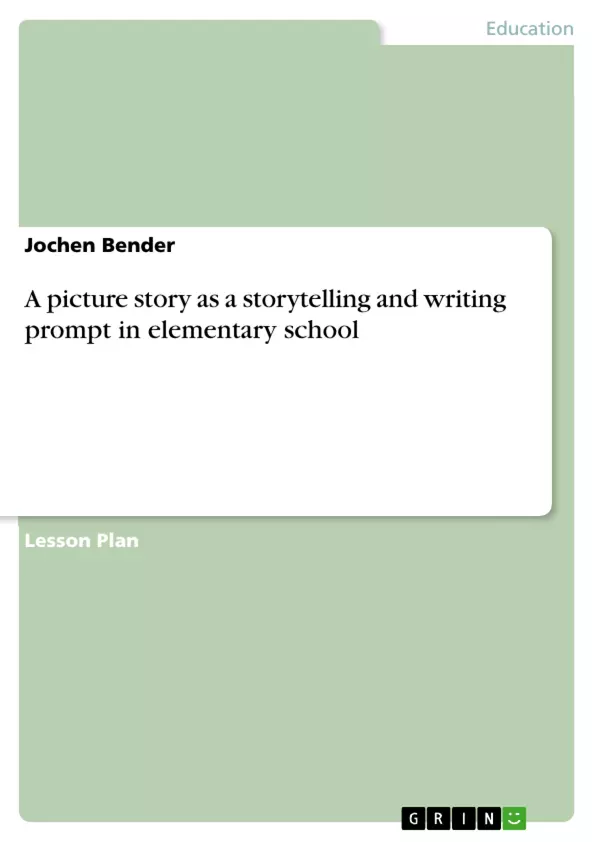Lesson Objective: To help students verbalize the content of a picture story, to write parts of the content in sentences, and to lead them toward more complex text production in the longer term.
Inhaltsverzeichnis (Table of Contents)
- Factual analysis
- Features of picture stories
- Content of the picture story from the series "Der kleine Herr Jakob"
- Learning requirements
- Situation of the class
- Technical and methodological requirements
- Organisational requirements
- Didactic analysis
- The present and future significance of storytelling and writing
- A picture story from the series "Der kleine Herr Jakob" as narrator and writing occasion
- Reference to the framework plan
- Reading by writing (Reichen)
- Methodological analysis
- Position of the lesson in the teaching unit
- Learning objective
- Tabular course of lessons
Zielsetzung und Themenschwerpunkte (Objectives and Key Themes)
This lesson aims to enhance students' storytelling and writing skills through the use of picture stories. The objective is to enable students to articulate the content of a picture story orally and to write parts of the content in sentences. This will serve as a foundation for more complex text production in the long term.
- The importance of storytelling and writing in early childhood development.
- The characteristics and function of picture stories as narrative tools in language learning.
- The relationship between oral language, visual comprehension, and written expression.
- The integration of picture stories into a comprehensive language curriculum.
- The development of differentiated instruction strategies to address individual student needs.
Zusammenfassung der Kapitel (Chapter Summaries)
The initial chapters delve into the factual analysis of picture stories, exploring their features and distinguishing them from other visual narratives like comics. The analysis focuses on the specific type of picture story used in this lesson, which is a short, humorous story from the series "Der kleine Herr Jakob." This section provides a detailed overview of the story's content.
The subsequent chapters shift to learning requirements, outlining the specific situation of the class, including student demographics, language abilities, and classroom dynamics. The technical and methodological requirements are also addressed, highlighting the students' familiarity with writing and their ability to express themselves orally and in written form. The organizational requirements focus on the classroom setup and resources available to the students.
The didactic analysis section examines the significance of storytelling and writing in both present and future contexts. The role of picture stories as motivating narrative tools and writing opportunities is emphasized, highlighting their potential to enhance language skills.
Schlüsselwörter (Keywords)
The primary focus of this text revolves around picture stories as tools for developing storytelling and writing skills in elementary school. Key concepts include: picture stories, narrative structure, visual comprehension, oral language, written expression, differentiated instruction, storytelling, writing prompts, and language curriculum. The text also emphasizes the connection between reading and writing, reflecting the importance of these skills in broader educational contexts.
- Quote paper
- Jochen Bender (Author), 2007, A picture story as a storytelling and writing prompt in elementary school, Munich, GRIN Verlag, https://www.grin.com/document/1256139



